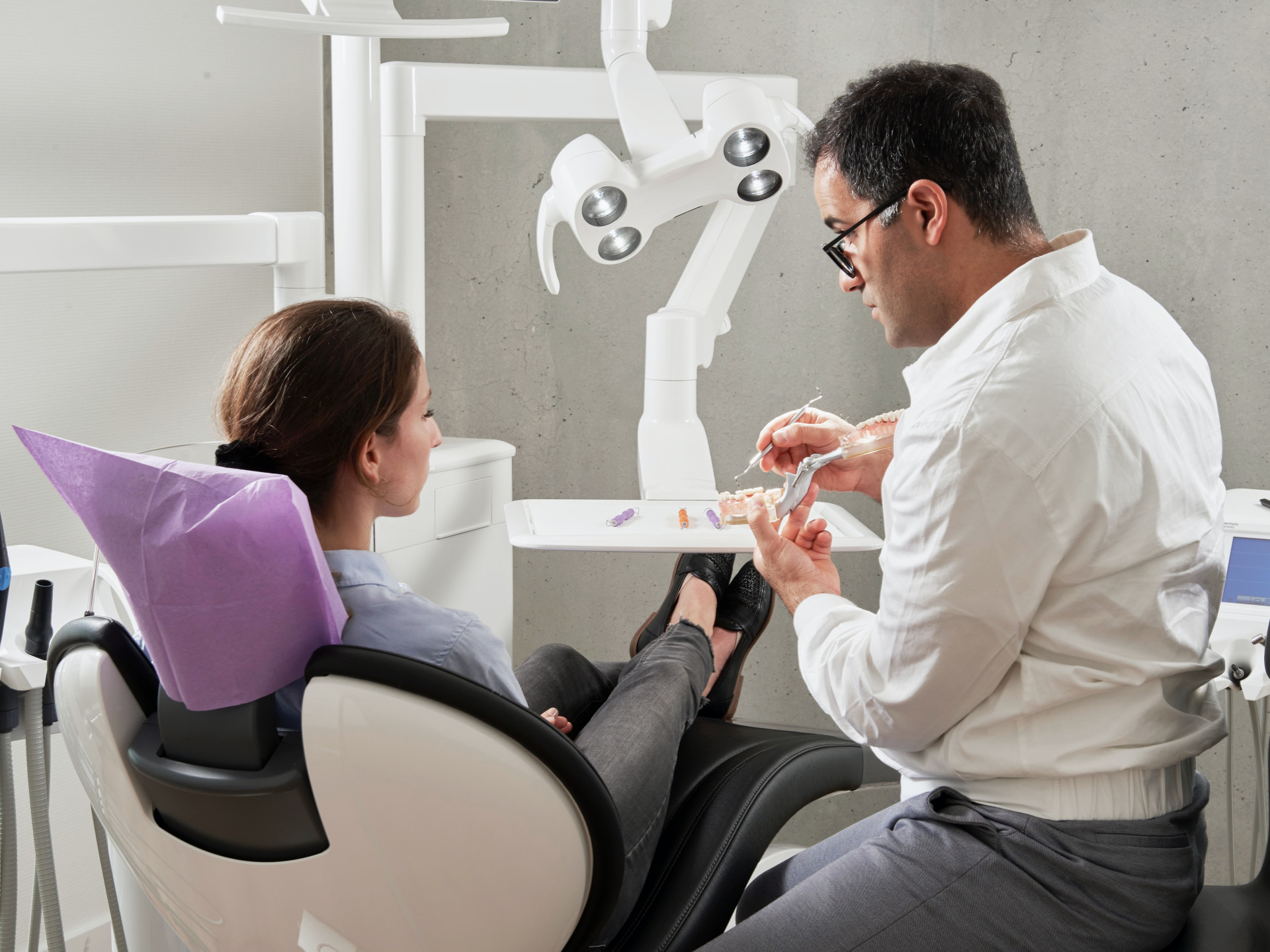4 min read
Clear Aligners vs Traditional Braces - Which Treatment is Right for You?

Choosing the right orthodontic treatment is an important decision that will impact your daily life for months or years. Both clear aligners and traditional braces can effectively straighten teeth, but they offer different advantages and considerations. In this comprehensive comparison, we’ll explore the key differences between clear aligners and traditional braces to help you make an informed decision about which treatment is right for you.
Understanding Your Options
Clear Aligners
Clear aligners are a series of custom-made, removable trays made from clear plastic that gradually move your teeth into proper position. Popular brands include Invisalign, ClearCorrect, and others. Each aligner is worn for about 1-2 weeks before moving to the next in the series.
Traditional Braces
Traditional braces consist of metal brackets bonded to your teeth and connected by wires that are periodically adjusted to guide teeth into alignment. Modern braces are smaller and more comfortable than older versions, and ceramic options provide a more aesthetic alternative to metal.
Appearance and Aesthetics
Clear Aligners: Nearly Invisible
Clear aligners are virtually invisible, making them an excellent choice for adults and image-conscious teens. The transparent plastic material is barely noticeable, allowing you to smile confidently throughout treatment.
Traditional Braces: More Visible
Traditional metal braces are clearly visible when you smile or speak. While ceramic braces are less noticeable, they’re still more visible than clear aligners. However, some patients, particularly younger ones, enjoy personalizing their braces with colored bands.
Treatment Effectiveness
Clear Aligners: Best for Mild to Moderate Cases
Clear aligners excel at treating:
- Minor to moderate crowding
- Small gaps between teeth
- Mild bite issues
- Minor rotations
They may not be suitable for severe orthodontic problems or complex bite corrections.
Traditional Braces: Comprehensive Treatment Capability
Traditional braces can handle virtually any orthodontic issue, including:
- Severe crowding and spacing
- Complex bite problems
- Significant rotations
- Vertical tooth movement
- Cases requiring tooth extraction
Convenience and Lifestyle Impact
Clear Aligners: Maximum Flexibility
- Removable for eating, drinking, and oral hygiene
- No food restrictions
- Easy maintenance and cleaning
- Ideal for sports and musical instruments
- Less emergency visits
Traditional Braces: Some Lifestyle Adjustments
- Fixed to teeth throughout treatment
- Certain foods must be avoided (hard, sticky, crunchy foods)
- Special tools needed for cleaning
- Potential for bracket damage during activities
- Risk of mouth injuries during contact sports
Comfort and Pain Management
Clear Aligners: Gradual, Gentle Movement
- Smooth plastic with no sharp edges
- Less initial discomfort
- Gradual tooth movement
- No mouth sores from wires or brackets
- Temporary mild discomfort when switching aligners
Traditional Braces: Initial Adjustment Period
- Initial soreness after placement and adjustments
- Possible irritation from brackets and wires
- May cause mouth sores initially
- Orthodontic wax can help with comfort
- Discomfort typically decreases over time
Treatment Duration
Clear Aligners: Often Faster
- Average treatment time: 12-18 months
- Fewer office visits required
- Some minor cases completed in 6-12 months
- Treatment length depends on case complexity
Traditional Braces: Varies by Case
- Average treatment time: 18-24 months
- Complex cases may take 2-3 years
- Regular adjustments every 4-6 weeks
- Consistent progress with fixed appliances
Cost Considerations
Clear Aligners: Moderate to High Cost
- Generally comparable to or slightly more expensive than traditional braces
- Cost varies by provider and case complexity
- Many insurance plans provide coverage
- Payment plans typically available
Traditional Braces: Variable Cost
- Often less expensive than clear aligners
- Metal braces typically cost less than ceramic
- Wide range of pricing based on treatment complexity
- Good insurance coverage typically available
Oral Hygiene During Treatment
Clear Aligners: Easier Maintenance
- Remove aligners for normal brushing and flossing
- No special tools required
- Lower risk of tooth decay and gum disease
- Regular cleaning of aligners needed
Traditional Braces: Requires Special Care
- Special brushes and flossing tools needed
- More time required for thorough cleaning
- Higher risk of plaque buildup
- Professional cleanings more important
Patient Compliance Requirements
Clear Aligners: High Compliance Needed
- Must wear 20-22 hours per day
- Responsibility for aligner care and tracking
- Discipline required for consistent wear
- Success depends heavily on patient compliance
Traditional Braces: Built-in Compliance
- No patient compliance issues with wearing
- Cannot be forgotten or lost
- Continuous treatment progress
- Less responsibility for patient
Which Treatment is Right for You?
Choose Clear Aligners If You:
- Have mild to moderate orthodontic issues
- Prioritize aesthetics during treatment
- Have a lifestyle requiring frequent aligner removal
- Are disciplined about wearing them consistently
- Want easier oral hygiene maintenance
Choose Traditional Braces If You:
- Have complex or severe orthodontic problems
- Prefer a “set it and forget it” approach
- Are cost-conscious
- Are a younger patient who might struggle with compliance
- Need comprehensive tooth movement capabilities
Conclusion
Both clear aligners and traditional braces are effective orthodontic treatments, but the best choice depends on your specific needs, lifestyle, and orthodontic requirements. Clear aligners offer superior aesthetics and convenience for appropriate cases, while traditional braces provide comprehensive treatment capability for all types of orthodontic problems. Consult with a qualified orthodontist who can evaluate your specific situation and recommend the most suitable treatment option for achieving your ideal smile. Remember, the best treatment is the one that fits your needs and that you’ll be comfortable completing successfully.